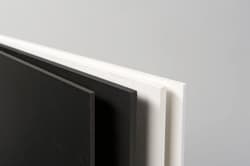David Moy and Max Schuelein of theprintspace in London talk to Oliver Atwell about the services the company offers and the best materials to mount your prints
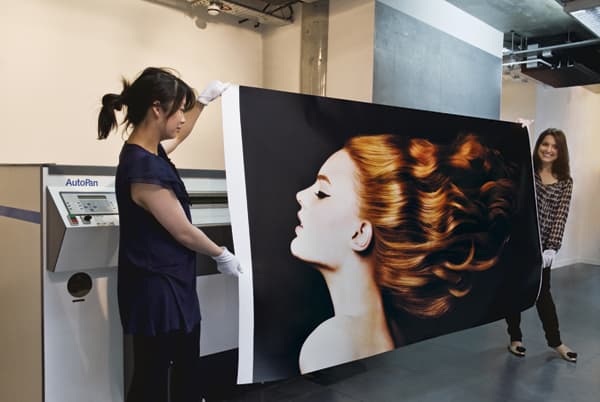
Theprintspace encourages customers to have a real hand in producing their printed work
Knowing what to do with your images once they’ve been taken is a problem many of us have encountered. Your photographs can either sit on your computer or in a dusty negative file on a bookshelf – or you can decide to bring them to life.
It would be fair to say that digital darkrooms now dominatethe image-printing market. While wet darkrooms will never disappear entirely, more and more people are turning to digital technology, negative scanners and Photoshop.
Theprintspace, based in east London, provides a service for people to come and have their images printed, mounted and framed. It’s one of many across the UK that encourages people to be more hands-on with their work.
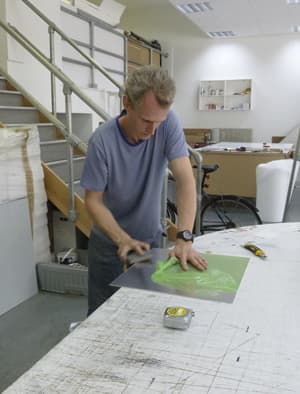
Print mounting is handled by a small team of experienced professionals
‘We try to encourage a bit of a do-it-yourself atmosphere in theprintspace,’ says production director David Moy. ‘We provide our clients with the colour management knowledge so they can then bring their files to us ready to print. We try not to have technicians looking over people’s shoulders.’
Theprintspace houses a creative area for people to retouch their work and remove spots of dirt, lowlights and redeye. Every computer has Photoshop and there are graphics tablets available to work with. On top of that, the main foyer is home to a gallery space where visitors are free to browse the latest work adorning the walls.
The people who walk through the doors of theprintspace have various requirements. ‘We get a real mixture of people coming in, although we tend to see a lot of wedding and portraiture work,’ says framer and print-mounter Max Schuelein. ‘Most importantly, people who come and see us tend to come back, so we can develop a real working relationship with the clients.’
Mounting materials
Deciding which material to use when mounting your prints for display or exhibition can be a daunting task. With so many on offer, it can be a headache deciding which ones will work best with your prints. Max Schuelein takes a look at some of the materials on offer.
Aluminium dibond
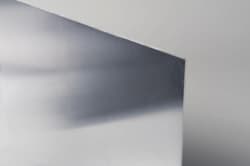 Aluminium is very light. This is the kind of material you’d consider using if you want your prints to be archival, so they can be displayed for a long time.
Aluminium is very light. This is the kind of material you’d consider using if you want your prints to be archival, so they can be displayed for a long time.
Aluminium dibond specifically refers to a type of sandwich panel, which in this case is a hard plastic material (2-3mm thick) placed between two sheets of aluminium. It’s a good option for prints as it looks really clean.
There are only two recommended fixtures for this option: an aluminium subframe and split battens. The battens are cheaper and are quite discreet. The subframe is a little deeper, so it’s further off the wall. From a visual perspective, the subframe definitely looks better.
Foamex
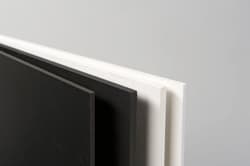 Foamex is a popular option because it lasts for a very long time. It is also very flat and rigid. You can’t dent it with your fingernail, unlike foamboard. It will really last.
Foamex is a popular option because it lasts for a very long time. It is also very flat and rigid. You can’t dent it with your fingernail, unlike foamboard. It will really last.
Foamex is available in black or white, so you can choose which colour will suit your print. People often attempt to use Foamex themselves at home, but I wouldn’t really recommend this. It’s not an easy material to work with even when you’re using a good craft knife.
It’s also very difficult to mount pictures without access to a laminator. We don’t recommend that you put anything on the back other than a subframe or Velcro, as the material can sometimes warp.
FoamBoard
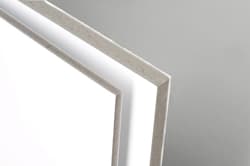 Foamboard is a decent inexpensive option. However, it’s also very soft and can be easily damaged. It comes in 5mm and 10mm thicknesses.
Foamboard is a decent inexpensive option. However, it’s also very soft and can be easily damaged. It comes in 5mm and 10mm thicknesses.
Foamboard is a good option if you have a very large print because it is very light. This is another material that people tend to work with themselves at home. While it’s a lot more manageable that Foamex, it can still be tricky. Just make sure you’re using a very sharp scalpel and a cutting board. Don’t attempt to cut it with scissors – it will be a disaster!
We generally recommend Velcro or press-in fixings when using Foamboard due to the fragile nature of the material.
Display card
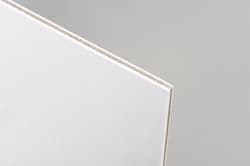 One of the cheapest options is to use 2mm display card to mount your prints.
One of the cheapest options is to use 2mm display card to mount your prints.
The most important thing to remember is that the card has to be kept flat because it can curl. While you can use this to mount your prints and put them on the wall, it could potentially look quite cheap.
If you are looking for an inexpensive option when mounting prints to hang on a wall, I would recommend Foamex. If you do decide to use display card, use Velcro as a fixing.
MDF
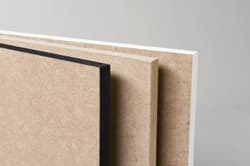 We use 12mm MDF for mounting prints. If you want something a little chunky but don’t want to pay a lot of money, then this is a decent option to choose.
We use 12mm MDF for mounting prints. If you want something a little chunky but don’t want to pay a lot of money, then this is a decent option to choose.
It’s heavy stuff, but perhaps not always the best option if you consider that it’s designed as a building material. MDF isn’t archival and it’s not acid free. In fact, it’s a very temporary solution.
I would recommend split battens, keyhole fixtures or mirror plates for this material.
Acrylic seal and acrylic reverse
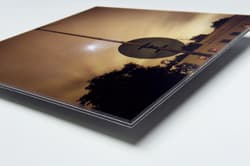 An acrylic seal is a protective acrylic coating on the front of a print and is particularly useful when there is the likelihood that the print could be marked or damaged.
An acrylic seal is a protective acrylic coating on the front of a print and is particularly useful when there is the likelihood that the print could be marked or damaged.
There are three different seals in the form of high gloss, satin and matt. The reason for having a seal is that they’re easy to wipe clean. Prints can get dusty and even have liquids dropped on them, so having the seal makes it a little easier to avoid stains and preserve your prints for longer.
With an acrylic reverse, the artwork is backed with Perspex, aluminium or dibond and then clear Perspex is mounted over the top. We can send these prints out to be polished so the edges of the acrylic are clear and shiny. This can tend to be the most expensive option, but the prints look great. This method gives the illusion of a high-definition image and brings out the colours.
Use a subframe to fix an acrylic reverse to give a great-looking piece of work.

